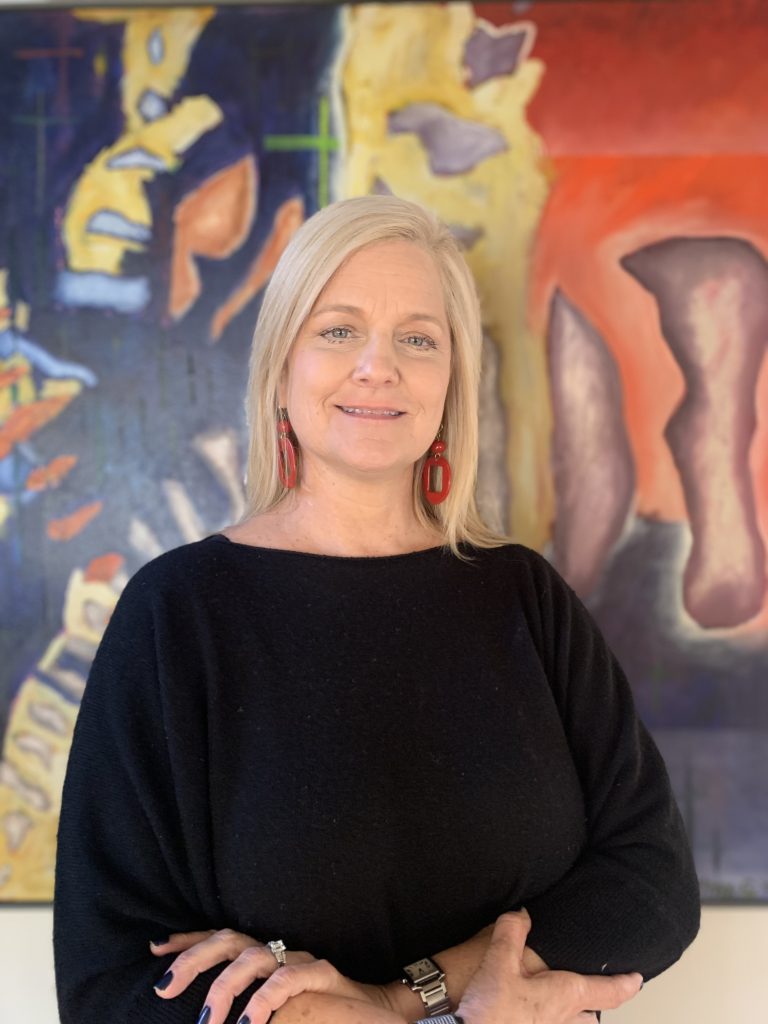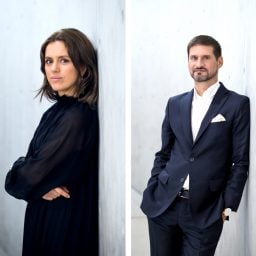In these turbulent times, creativity and empathy are more necessary than ever to bridge divides and find solutions. Artnet News’s Art and Empathy Project is an ongoing investigation into how the art world can help enhance emotional intelligence, drawing insights and inspiration from creatives, thought leaders, and great works of art.
When thinking about the various departments that fill a major art institution, it is unlikely that a center dedicated to examining the connection between art and empathy is one that comes to mind. But that’s exactly what the Minneapolis Institute of Art (Mia) established four years ago when it founded the Center for Empathy and the Visual Arts (CEVA) in an effort to integrate ongoing research on empathy conducted by top thought leaders and scientists into all aspects of the museum.
To get the complete picture of how the center came to be, we spoke to CEVA’s director Karleen Gardner. Gardner’s multifaceted role combines her experience as a museum educator with her passion for understanding all the ways that unseen forces can connect people from seemingly disparate groups.
Here, Gardner discussed what her job entails, if art can be used to teach empathy, and why more museums need to do a better job of connecting with their communities.
Can you explain your title and how it came to exist?
My role at Mia is unique. We knew that this work and research needed to be intentional and integrated throughout the museum, not just in the education division. With generous funding from the Andrew W. Mellon Foundation and Mia donors, we launched the center in 2017.
I feel fortunate to work across the museum. CEVA touches many aspects of our work. As an audience-centered institution, Mia values the various perspectives and knowledge of our diverse communities and practices empathy by getting input and feedback through surveys, focus groups, and listening sessions. We ask ourselves and our visitors how we can create a more welcoming, inclusive environment in which people feel comfortable enough to be vulnerable and open to new ideas. We embed this approach into the curation and development of our exhibitions and gallery teaching practices. We conduct research and build upon our learnings in subsequent projects.
Another aspect of CEVA is the development and facilitation of think tanks and labs. We know that we cannot do this work alone, so through conversations with these external organizations, we’re able to engage multiple perspectives and cross-disciplinary expertise. Our first official program was a cross-disciplinary think tank comprised of social scientists, a neuroscientist, scholars, historians, artists, and technologists who came together to collectively examine the role of the visual arts in cultivating empathy. In 2019, another interdisciplinary group gathered for Empathy Lab, a conference that brought together experts from various fields to brainstorm and develop prototypes and strategies for fostering empathy through arts-based engagement. The ideas generated through these gatherings continue to inform our work on exhibitions and how we interpret them, our educational programming, and our interactive gallery experiences. Divergent thinking and elevating the voices and views of non-art world and non-museum folk are integral to changing our practices, expanding our audiences, and, in turn, our impact.
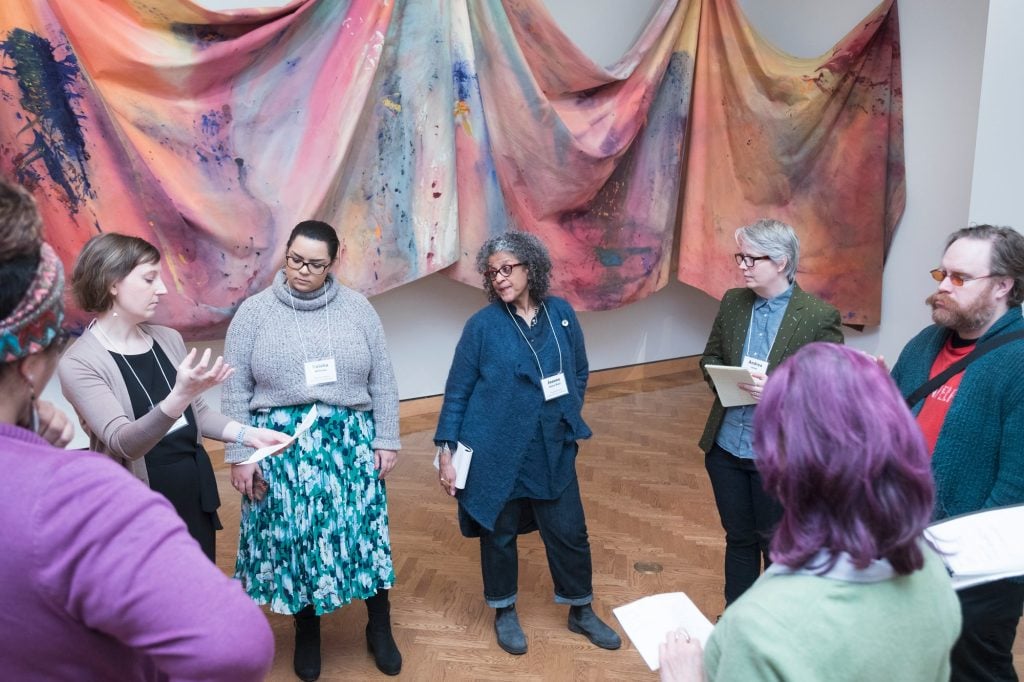
An image from the 2019 Empathy Lab. Photo courtesy the Minneapolis Institute of Art.
When did you first become interested in the area of art and empathy?
Several years ago, I was thinking about the polarization and disconnection in our world and wondered what role the visual arts might play in connecting people despite their differences. This is when I began to focus on empathy. In doing research into the empirical data that existed then on the connection between visual arts and cultivating empathy, I came up relatively empty-handed. So I realized there was a gap and saw an opportunity to do research in this area. I knew that we needed to take a multi-disciplinary approach, so we engaged academic partners from UC Berkeley and the University of Minnesota in the conversation, too. We then committed to this research as an institution and established the center.
Tell me a little about some of your more notable findings.
First, the amount of interest and positive responses we have gotten from people all over the world, from a variety of fields and disciplines, has been incredible. So my first big learning is that many people, regardless of what work they do, are looking for ways to build bridges and they see empathy as a key factor in doing that.
We also have some interesting findings from our exhibition research over the past two years. This work includes collaborations with curators, artists, and/or members of relevant community groups. These partnerships have yielded interpretive materials, including audio and video recordings of personal stories or reactions to specific works of art, art installations, contextual materials, and programming. In addition to our regular post-visit exhibition survey about visitors’ overall experience, we added questions to address the overarching elements of empathetic thinking and feeling: emotional responses, connections with personal identity, and perspective-taking. Through this research, we have learned that both the art itself and the interpretive materials that we develop (first-person narratives in audio tours and video interviews with artists) prompt visitors to think from perspectives other than their own.
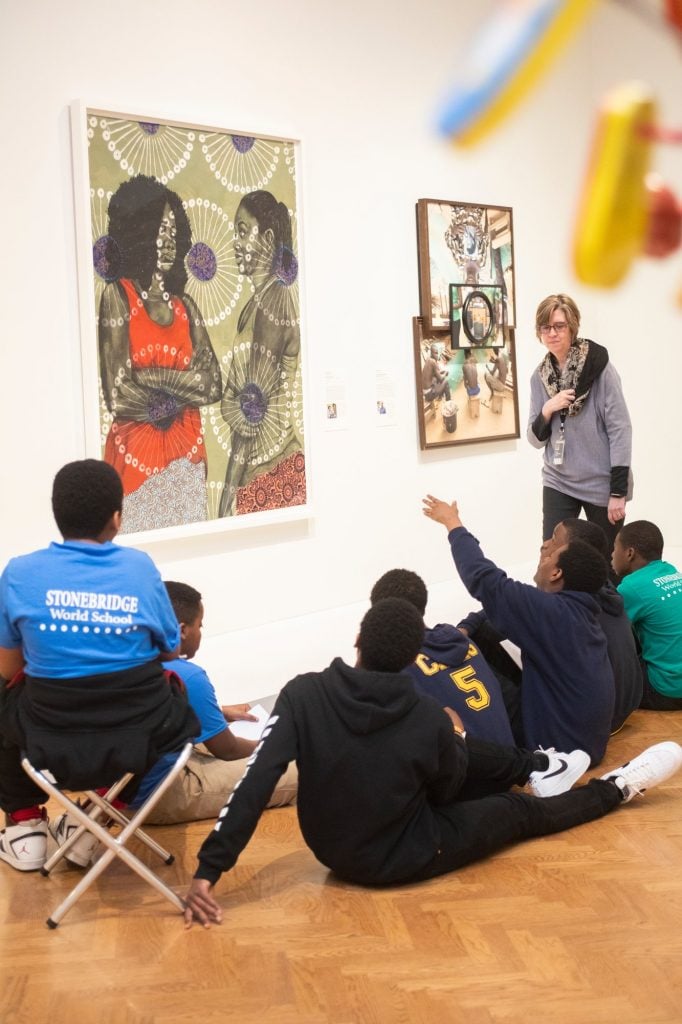
Students from Stonebridge World School helping museum staff test and develop strategies for their empathy tours. Photo courtesy the Minneapolis Institute of Art.
Are there other roles similar to yours in the art world? Where else is similar research being conducted?
Happily, I am one part of a field-wide “empathy movement” that is made up of people who are committed to embedding and researching empathy in their practices at many museums, academic institutions, zoos, and aquaria. We all believe that empathy can benefit our world in numerous ways. So, there are indeed some researchers and educators whose roles are similar to mine. However, my role is unique in that I work across the museum through cross-functional collaborations and the center’s work impacts nearly all facets of the museum including Mia culture, programs, exhibitions, community engagement work, and so on.
Looking toward the future, do you see this field growing within the art world?
I certainly hope so. I think that museums, now and in the future, need to focus more on the impacts and outcomes that our collections, programs, and exhibitions can have on our visitors. How can our work positively impact and challenge our visitors to think or act differently? I encourage museums to expand their thinking and practices regarding their roles in and responsibilities to their communities. This shift can create opportunities for museums to amplify their public value by participating in and leading social change efforts. I hope to see more dedication to and research on civic engagement and social impact in art museums.
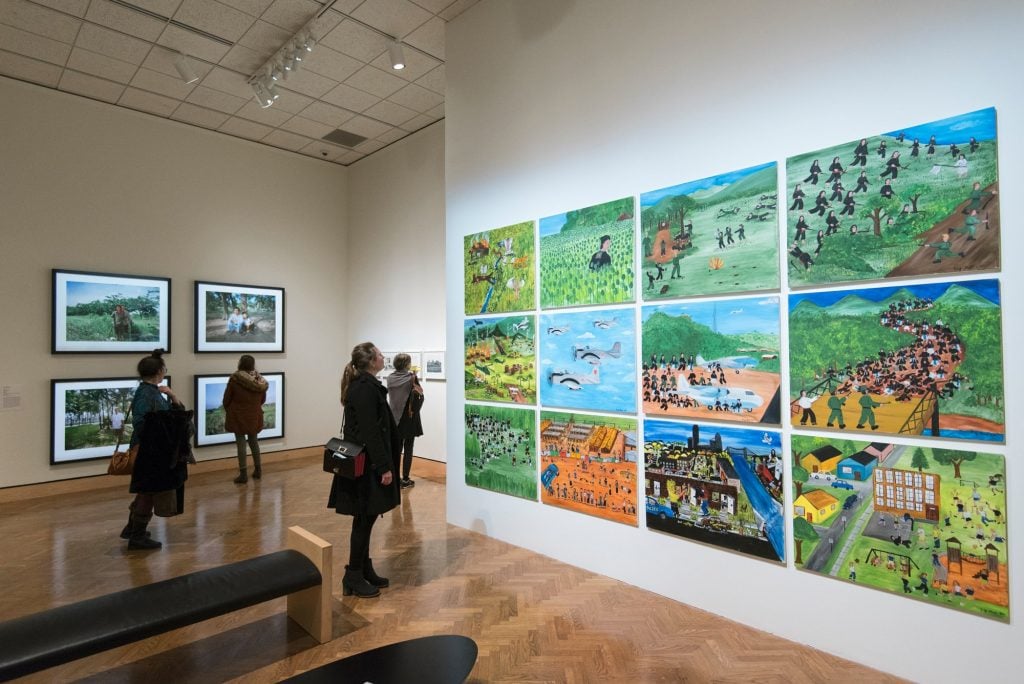
An installation view of “Artists Respond: American Art and the Vietnam War, 1965-1975.” Photo courtesy the Minneapolis Institute of Art.
Are there aspects of the job that you’ve carried into your approach toward empathy in your personal life?
Absolutely. One of the fascinating things about my role and our research is that I have become more immersed in the social sciences. Something important that I’ve learned is how brains constantly take shortcuts and make snap judgments, especially when we are stressed. This does not promote empathic thinking or practices. So, I have become much more intentional about practicing mindfulness and being aware of my mood or mindset as I enter situations.
Also, in our endless Zoom meetings these days, I have noticed myself using skills from the museum gallery exercises and activities that we have developed specifically for our “empathy tours.” I’ll look closely at people’s facial expressions and what I can see of their body language to gauge their emotions. When a colleague says something that I believe will impact another colleague, I quickly scan my screen to find their face and try to engage with how they’re reacting. Generally speaking, I think I’m always trying to consider things more deeply from the perspective of others.
